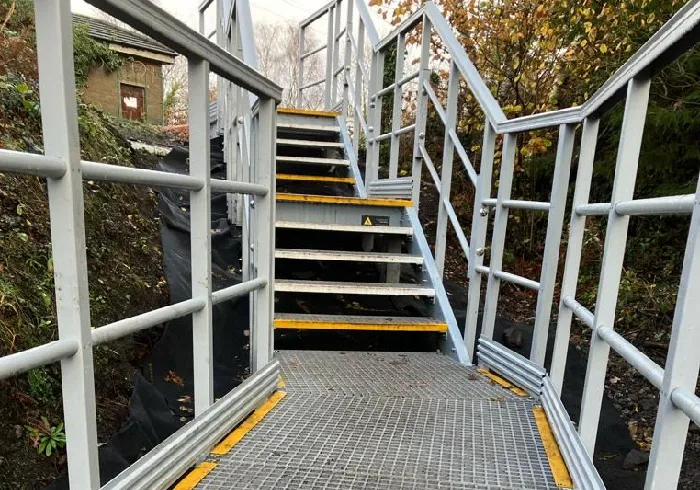loading...
- No. 9, Xingyuan South Street, Dongwaihuan Road, Zaoqiang County, Hengshui, Hebei, China
- admin@zjcomposites.com
- +86 15097380338
- Welcome to visit our website!
Innovative Solar Structures Utilizing FRP for Enhanced Energy Efficiency and Durability
The Rise of FRP Solar Structures An Innovative Approach to Renewable Energy
As the world shifts towards renewable energy sources to combat climate change and reduce dependency on fossil fuels, innovative technologies have emerged to improve the efficiency and durability of solar energy systems. One such advancement is the use of Fiber Reinforced Polymer (FRP) structures in solar applications. This article explores the benefits, applications, and future prospects of FRP solar structures, highlighting their critical role in the renewable energy sector.
Understanding FRP Materials
FRP is a composite material made up of a polymer matrix reinforced with fibers, typically glass, carbon, or aramid. This unique combination results in a lightweight, high-strength material that is resistant to corrosion, UV degradation, and environmental stressors. These properties make FRP an ideal candidate for various applications, particularly in industries where durability and resilience are paramount.
Advantages of FRP in Solar Structures
1. Lightweight Design One of the most significant advantages of FRP is its lightweight nature. Traditional materials like steel and concrete can be heavy and cumbersome, imposing additional logistical challenges during transportation and installation. FRP structures, being significantly lighter, result in reduced transportation costs and allow for easier handling and installation, especially in remote or challenging locations.
2. Corrosion Resistance Solar energy systems often operate in diverse environmental conditions, including coastal and industrial areas where corrosive elements are prevalent. FRP materials exhibit excellent resistance to corrosion, ensuring that solar structures have a longer lifespan and require less maintenance compared to traditional materials.
3. High Strength-to-Weight Ratio FRP boasts a superior strength-to-weight ratio, providing robust structural support for solar panels without the added weight of traditional materials. This characteristic allows for the design of sleeker, more efficient structures that can withstand severe weather conditions, including high winds and heavy snow loads.
4. Lower Lifecycle Costs Although the initial investment in FRP materials may be higher than traditional options, their long lifespan, low maintenance needs, and resistance to environmental degradation significantly lower overall lifecycle costs. This economic advantage makes FRP an increasingly attractive option for both solar project developers and investors.
5. Environmental Impact As a composite material, the production of FRP can have a lower carbon footprint compared to traditional construction materials. Furthermore, FRP can be manufactured from recycled materials, adding another layer of environmental benefit. This sustainability aligns well with the goals of expanding the use of renewable energy and reducing environmental harm.
frp solar structure

Applications of FRP Solar Structures
FRP materials are already making waves in various solar energy applications. They are being used in the construction of solar panel mounting structures, which support and secure solar panels in place. The lightweight nature of FRP allows for innovative designs, including adjustable tilt frames that can optimize solar panel positioning for maximum sunlight exposure.
Additionally, FRP is used in the construction of solar farms, especially in locations where access to heavy machinery is limited. Their ease of transportation and installation allows developers to set up solar fields more efficiently, thereby reducing the time required for project completion.
Moreover, FRP structures have applications in building-integrated photovoltaics (BIPV). These innovative installations incorporate solar elements into building materials, such as windows and facades, creating aesthetically pleasing designs without compromising structural integrity.
Future Prospects
The future of FRP solar structures appears promising. As technology continues to advance, we can expect further enhancements in the performance and sustainability of FRP materials. Research into new fiber types and manufacturing processes is underway, which could lead to even more efficient and environmentally friendly composites.
The global push for renewable energy and sustainability will likely drive further adoption of FRP in solar energy infrastructures. Governments and organizations focusing on green building initiatives may incentivize the use of FRP materials, positioning them as a standard in future solar projects.
Conclusion
In conclusion, FRP solar structures represent a significant step forward in the quest for efficient, durable, and sustainable solar energy solutions. With their unique properties and wide-ranging applications, FRP materials contribute not only to the effectiveness of solar energy systems but also to the overarching goal of building a cleaner, greener future. As we continue to innovate in the renewable energy sector, embracing materials like FRP will be crucial in realizing our energy goals and combatting climate change effectively.
-
Transform Your Spaces with FRP Grating SolutionsNewsNov.04,2024
-
The Versatility and Strength of FRP RodsNewsNov.04,2024
-
The Excellence of Fiberglass Water TanksNewsNov.04,2024
-
The Benefits of FRP Grating for Your ProjectsNewsNov.04,2024
-
Elevate Your Efficiency with FRP Pressure VesselsNewsNov.04,2024
-
Welcome to the World of FRP Pressure VesselsNewsOct.12,2024
-
Unveiling the Future of Filtration: Why FRP Filter Vessels are a Game ChangerNewsOct.12,2024
